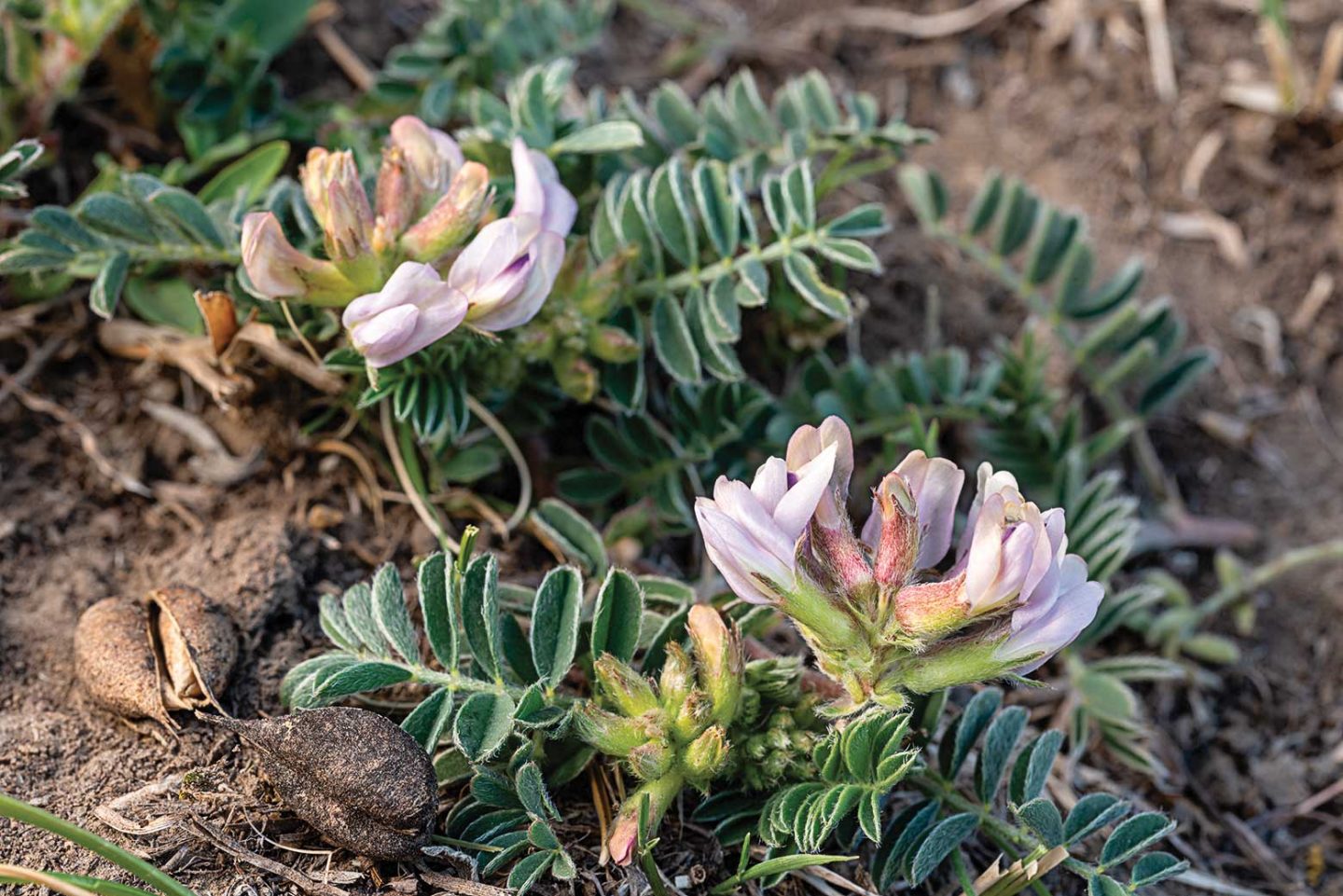
By Gerry Steinauer, Botanist
Wildflowers are like wildlife in that the big, showy species, such as sandhill cranes, mountain lions, roses and gayfeathers, get all the notice and attention, while small, less eye-catching species sadly go unnoticed.
A prime example of this are Nebraska’s 24 native milkvetch (Astragalus) species. Most are rosette-forming plants with colorful, clustered flowers that inhabit dry rock outcrops and clay badlands in the Panhandle. Some are tall prairie plants with spikes of large blue, purple or white flowers. These two groups are the eye-catching milkvetches whose photos often adorn wildflower guides.
Yet four others — ground plum, Platte River milkvetch, Missouri milkvetch and lotus milkvetch — are short prairie species that bloom in spring with smaller, less pretentious flowers. These are often hidden among the prairie grasses and are easily overlooked.
Milkvetches belong to the legume or pea family and are characterized by five-petaled, pea-shaped flowers, compound leaves with few to many leaflets and pods as fruits. The species can be difficult to identify if only their similar-appearing flowers and leaves are present. Fortunately, each has a seed pod that is fairly distinct in size, shape or hairiness, which greatly aids in identification. Yet, they still manage to challenge botanists and nature photographers.
The pursuer of our obscure milkvetches must have knowledge of each species’ specific prairie habitat and a keen eye to find them. For the photographer, these plants are best captured when in bloom, but the perplexed shutterbug may have to return to the site in early summer and observe the plant’s pods to correctly identify their subject.
Ground Plum
Ground plum (A. crassicarpus), also called buffalo bean, is the largest and most common of our obscure milkvetches. It grows in moist bottomland to dry hilltop prairies nearly statewide. Its whitish to lilac flowers, the petals tipped with purple, appear in late April through May and are soon followed by inch-long, green seed pods that lie on the ground. Native Americans and settlers ate the young, tender pea-flavored pods raw, cooked and pickled. Rodents, including prairie dogs and mice, cache the dry, leathery pods and eat the seeds later.
Platte River Milkvetch
In early June 1820, Edwin James, botanist, geologist and surgeon for the Long Expedition to the Rocky Mountains, first collected Platte River milkvetch (A. plattensis) in Nebraska along the Platte River in what is now either Dodge or Colfax County. This plant is limited to relatively undisturbed prairies throughout much of the state, excluding far eastern Nebraska. Platte River milkvetch is similar in size and appearance to ground plum and is often confused with it. The species are most easily distinguished by their mature pods. Platte River milkvetch pods are hairy and have a pointed tip, while ground plum’s pods are smooth and blunt-tipped.
Missouri Milkvetch
Missouri milkvetch (A. missouriensis) grows mainly on dry, often sparsely-vegetated gravel, clay and loam soils in the western half of the state. A more delicate and less upright plant than the two previously described species, Missouri milkvetch has a very short stem, and its leaves lie prostrate on the ground. The plant’s leaflets are covered in short, appressed hairs that give them a unique silvery or greenish-gray hue. The flowers can be white but are usually rich purple in color with a splash of white in the center of the upper petal. The small pods are boat-shaped.
Lotus Milkvetch
In late June 1820, James collected lotus milkvetch (A. lotiflorus) along the Platte River in what is now either Keith or Lincoln County. This plant grows mostly in dry hilltop prairies throughout the state, but is more common westward. It is fairly tolerant of disturbance, such as heavy grazing, and can inhabit degraded prairies. Lotus milkvetch is similar in size to Missouri milkvetch, but distinguished from the latter species by its green, more upright leaves and white to creamy yellow flowers with purplish streaks in the center of the petals. The small pods are crescent moon-shaped.
These four milkvetch species are so often unseen that the only photographs of the largest and most common ground plum grace the pages of wildflower guides. As beautiful as these delicate wildflowers are, it is unfortunate. Come mid-April, a search for them would be rewarding.
